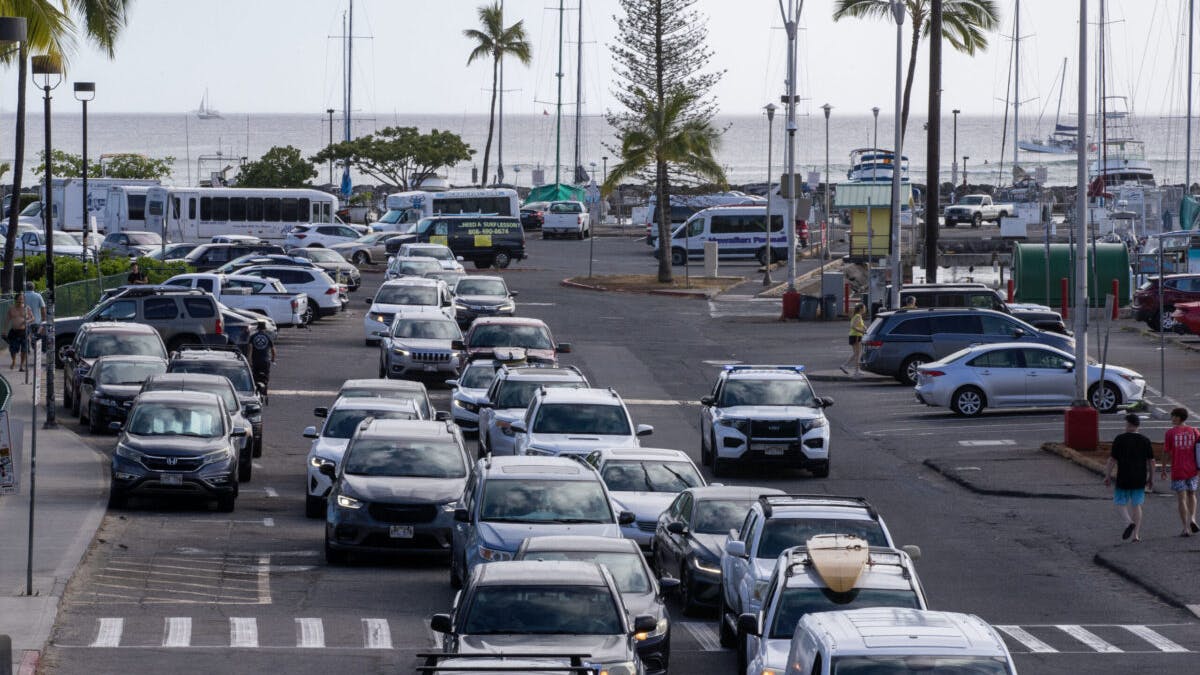


Tsunami waves caused by a massive 8.8 magnitude earthquake off the east coast of Russia hit Hawaii, California, and Washington late Tuesday night into Wednesday morning.
Maui reported waves as high as 5.7 feet, while Crescent City, California, saw waves up to 3.6 feet, NBC News reported. While the strongest tsunami surges appear to be over for Hawaii, Alaska, and much of the West Coast, warnings remain in effect for parts of Northern California, including Eureka and Crescent City.
The National Weather Service office in Eureka, California, said early Wednesday morning that “Tsunami activity is continuing to build this morning as we approach the 4 AM minor high tide.”
“Continue to avoid beaches and harbors as tsunami activity will persist,” the NWS added.
Tsunami activity is continuing to build this morning as we approach the 4 AM minor high tide. Maximum confirmed heights for our coast so far:
Crescent City: 3.6 Ft
Humboldt Bay: 1.2 Ft
Arena Cover: 3.0 FtContinue to avoid beaches and harbors as tsunami activity will persist. pic.twitter.com/ellGAUW9C7
— NWS Eureka (@NWSEureka) July 30, 2025
The NWS issued a strong warning for Crescent City and Humboldt Bay just after midnight local time, saying, “The first Tsunami waves are beginning to impact the coast with clear waves being recorded at the Crescent City and Humboldt Bay tide gauges. Waves will continue to build in through the night and will become more dangerous as we approach high tide. Stay away from beaches!”
The first Tsunami waves are beginning to impact the coast with clear waves being recorded at the Crescent City and Humboldt Bay tide gauges.
Waves will continue to build in through the night and will become more dangerous as we approach high tide. Stay away from beaches! pic.twitter.com/EKR5gZukCH
— NWS Eureka (@NWSEureka) July 30, 2025
Northern California is especially prone to damage from tsunamis, as waves are often stronger in the area and reach higher in harbors than in other parts of the West Coast, according to the National Oceanic and Atmospheric Administration, USA Today reported.
No deaths or severe structural damage have been reported in Alaska, Hawaii, or the West Coast as of Wednesday morning. Evacuation orders for Hawaii were lifted hours after they were issued as the surge calmed. Emergency officials in the state said that they did not expect any widespread flooding, giving residents the all-clear to return to their homes, but adding that people should “remain cautious in or near the water. … Stay away from beaches, shorelines, and out of the ocean.”
Tsunami waves hit Washington state shortly after midnight local time, but officials said that though “strong and unusual” currents were likely, they did not expect any coastal inundation. For Oregon, officials downgraded a tsunami watch to an advisory, but still warned people to stay away from the shore.
While Alaska’s warning was also downgraded to an advisory, forecasters said that currents at beaches, inlets, and harbors could remain dangerous for days. The coast of British Columbia, Canada, also remains under a tsunami advisory.
The 8.8 magnitude earthquake off of Russia’s remote east coast was in the top 10 strongest earthquakes in recorded history, and the biggest since 2011. Japan and some Pacific islands also issued tsunami warnings and advisories after the quake. Waves reached the U.S. territory of Guam in the early morning hours, with waves reaching up to a foot high and bringing the potential of minor flooding and strong currents. As tsunami alerts went out, nearly two million people in Japan were told to evacuate. The country later downgraded its warnings to advisories.
